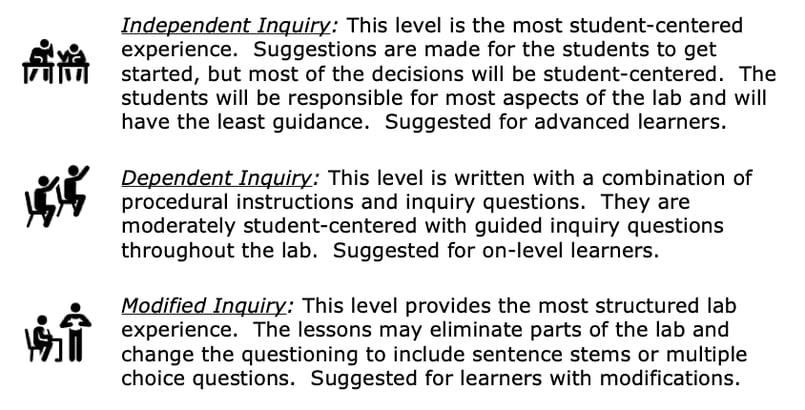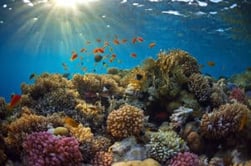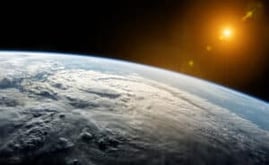Watersheds Inquiry Lab
Middle School Inquiry Lab on Watersheds
In this lab students will model how livestock activity impacts surface water and groundwater in a watershed. Students will set up a model of an agriculture pasture and use food coloring to represent pollutants from livestock. Students will observe the movements of pollutants on the surface and use the soap dispenser pump to observe the effects pollutants have on the groundwater.
Each inquiry lab will contain an essential question that will drive the lesson and make students think. For this lesson, the essential question is:
- How does human activity impact pollution in a watershed?
BACKGROUND INFORMATION AND MATERIALS LIST:
Students will begin the lab by reading the essential question and background information. This can be done individually, as lab groups, or as a whole class. If you consider lab groups, you also might include some type of whole class formative checks before digging into the lab.

Materials List:
- plastic container
- pump from soap dispenser (large enough to fit into the plastic container)
- small river rocks
- paper towel (large enough to cover the bottom of the plastic container)
- graduated cylinder
- Styrofoam cup with small holes poked in the bottom
- Styrofoam cup without holes poked in the bottom
- 8-10 drops of food coloring
- sprinkle of hot cocoa mix
- plastic farm animals (optional)
- tap water
PROCEDURE:
For this lab, students will create a model of farmland where livestock roams freely. Using food coloring to represent pollutants, students will observe how the pollution affects the watershed. Students start their models off by placing rocks and water in a shoe size container. Then using the paper towel as the surface, students place animals (optional) and drops of food coloring and cocoa on the paper towel.
Using the Styrofoam cup with holes, students will add water to the cup and hold it over their model to simulate rain falling down from the holes in the cup. After the precipitation has concluded, students begin to pump out water from their aquifer to see how polluted it got after the “rain.” Finally, students will make observations and a sketch of their model on their lab sheet.
CHECK FOR UNDERSTANDING:
At this point in the lab, students will be checked for understanding by answering questions about their findings. Here is one that comes with the lab:
- Does the water in the container represent groundwater or surface water?
CONCLUSION
Students will go back to the essential question and write a CER (Claim, Evidence, Reasoning) to conclude the lab. Once completed, students will reflect back on their learning by answering the following questions:
- Does the pollution from the livestock represent point source pollution or non-point source pollution?
- What happens to large amounts of waste from livestock?
- How might farmers help reduce the amount of waste being released into the watershed?
MODIFIED AND INDEPENDENT INQUIRY VERSIONS
All of the Kesler Science inquiry labs come with three different modification levels. Each lab is differentiated using the icons below.
STANDARDS ALIGNMENT
TEKS: 7.8C – Model the effects of human activity on groundwater and surface water in a watershed.

Download Over $100 in FREE Resources
For Middle School Science
Simply create a login below and gain immediate access to a selection of our Kesler Science product line worth $100 - for FREE. There's a full version of every product type! You'll also join tens of thousands of middle school science teachers who receive timely tips and strategies straight to their inbox.





